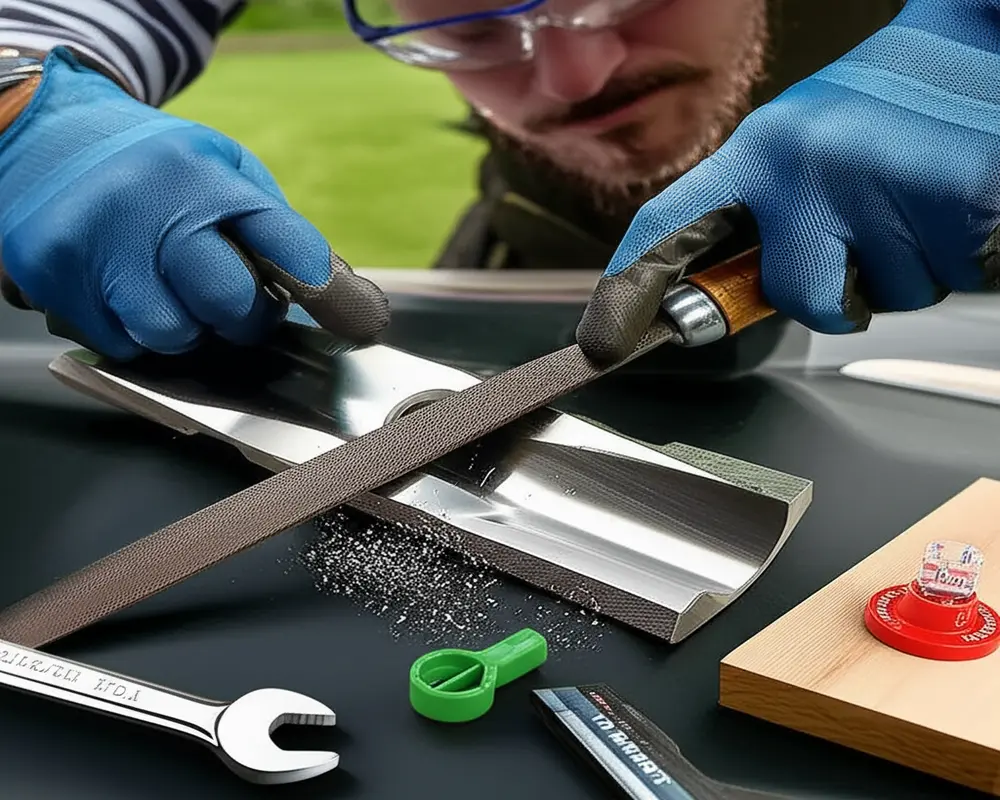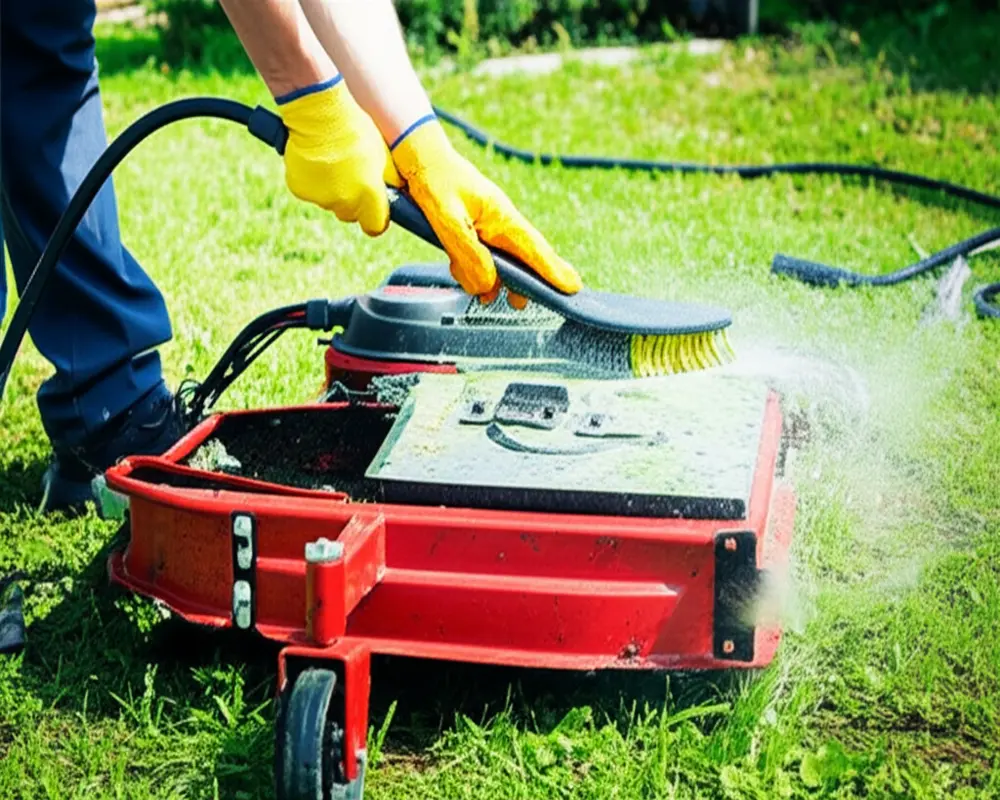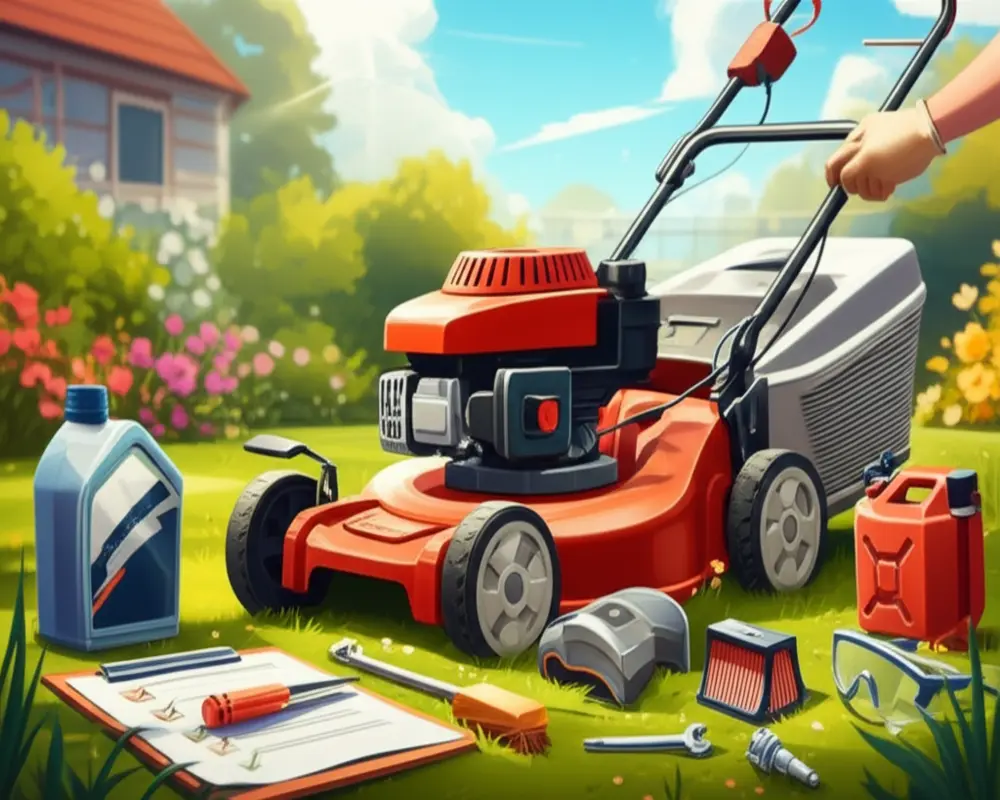Summer Lawn Mower Maintenance: Essential Tips for Peak Performance
Summer means longer days, lush green grass, and more frequent mowing. For your summer lawn mower maintenance, this increased usage combined with hotter temperatures and rapid grass growth demands a focused approach to keep your mower running smoothly and efficiently. Regular upkeep during the summer not only extends the life of your mower but also ensures it delivers optimal performance with fewer breakdowns, saving you costly repairs down the line.

I. Safety First: Essential Precautions Before You Begin
Before diving into any maintenance tasks, safety must be your top priority. To prevent accidental starts, always disconnect the spark plug wire, ensuring the engine cannot ignite unexpectedly. Engines retain heat, so wait until the mower has completely cooled to avoid burns and to allow for a thorough inspection. Protective gloves and eye protection guard against sharp parts and debris. Work on a flat, stable surface to keep the mower steady, and always consult your owner’s manual for model-specific safety instructions and maintenance tips.
II. Pre-Maintenance Checklist: Tools & Supplies You'll Need
Equipping yourself with the right tools and supplies helps make your summer maintenance routine efficient and effective. Essential tools include a socket wrench, wire brush, oil drain pan, funnel, air compressor or brush for cleaning filters, a blade sharpening tool or file, and a spark plug wrench. Stock up on fresh engine oil suited for summer conditions, a new air filter, replacement spark plugs, fuel stabilizer to keep gasoline fresh, deck cleaner or scraper to remove grass buildup, a blade balancing tool to ensure smooth operation, and clean rags for wiping down components.
III. Core Summer Lawn Mower Maintenance Tasks (Step-by-Step)
A. Check and Change Engine Oil (Every 25-50 Hours or Seasonally)
Hotter summer temperatures cause engine oil to degrade faster, reducing its ability to lubricate effectively. Regular oil checks and timely oil changes are critical in preventing engine wear. Begin by placing the mower on a level surface and removing the dipstick to check the oil level. If low or dirty, drain the old oil into a pan via the oil drain plug, then refill with fresh oil recommended by your mower’s manufacturer—usually SAE 30 or 10W-30 for warmer months. This process minimizes friction and overheating, ensuring your mower runs efficiently all summer long.
B. Inspect and Clean/Replace Air Filter (Every 25 Hours or More Frequently)
Summer often brings dusty, dry conditions that clog air filters, restricting airflow and reducing engine performance. Depending on your mower’s model, air filters may be foam, paper, or fabric. Foam filters can usually be washed and dried before reinstalling, whereas paper filters require replacement when dirty. Clean or replace the air filter to maintain proper combustion and fuel efficiency, preventing rough idling or difficulty starting.
C. Sharpen and Balance Mower Blades (Monthly or Every 25 Hours)
Thick summer grass demands sharp blades for a clean cut. Dull blades tear rather than slice, causing uneven growth and stress to your lawn. Begin by removing the blade according to your mower’s instructions, usually by loosening the bolt with a socket wrench. Use a sharpening tool or file to restore a sharp edge, taking care to maintain the blade’s original angle. After sharpening, use a blade balancing tool or hang the blade on a nail to check balance; an unbalanced blade causes vibration and premature wear. Replace blades if excessively worn or damaged.

D. Inspect and Replace Spark Plug (Annually or Every 100 Hours)
A worn or fouled spark plug can cause starting problems and erratic engine performance. Inspect the spark plug for signs of wear like discoloration, deposits, or corrosion. Remove it with a spark plug wrench, check the electrode gap with a feeler gauge, and clean or replace as necessary. A properly gapped and clean spark plug ensures efficient ignition and reliable starts.
E. Clean the Mower Deck & Undercarriage (After Each Use or Every Few Mows)
Grass clippings and debris tend to accumulate on the underside of the mower deck, especially during frequent summer mowing. This buildup reduces cutting efficiency and can lead to rust or corrosion. After every few mowing sessions, use a deck cleaner or scraper to remove grass clumps, followed by washing with water. Inspect the deck for any damage to maintain a smooth cutting surface.

F. Fuel System Best Practices for Summer (Ongoing)
Fresh fuel is vital for mower performance. Use gasoline treated with a fuel stabilizer to prevent degradation during storage, especially if your mower won’t be used daily. Avoid storing fuel for extended periods to reduce gum and varnish buildup in the carburetor and fuel lines. Regularly inspect fuel lines for cracks or leaks and replace them if damaged to prevent fuel flow issues.
G. Inspect Wheels, Belts, and Cables (Monthly)
Check tire pressure and condition to ensure smooth maneuvering. Lubricate wheel bearings, belts, and control cables to prevent stiffness and wear. Replace worn belts or frayed cables as these components contribute to mower responsiveness and cutting effectiveness.
IV. Summer-Specific Mowing & Operational Tips
Adjust your mower's blade height higher in the summer to avoid scalping the grass, which can cause stress and brown patches. Avoid mowing when the grass is wet to prevent clumping and uneven cuts. Allow the engine to cool by taking breaks during extended mowing sessions, reducing the risk of overheating. Store your mower in a shaded, dry location between uses to protect it from the elements. Remain alert for unusual sounds or vibrations during operation, as these can signal maintenance needs.
V. Troubleshooting Common Summer Lawn Mower Issues
Engine overheating in summer often results from dirty air filters, low oil, or clogged cooling fins. Regular cleaning and oil checks prevent this. Power loss or bogging down may indicate fuel system problems or dirty spark plugs. Uneven cutting can be due to dull blades or unbalanced components. Starting problems often arise from faulty spark plugs or stale fuel, while excessive smoke could signal oil leaks or improper fuel mixtures. Addressing these issues promptly helps maintain mower reliability throughout the season.
VI. Your Summer Lawn Mower Maintenance Schedule
| Interval | Maintenance Tasks |
|---|---|
| Daily / Before Each Use | Check oil level, inspect air filter, clear debris from deck |
| Monthly / Every 10-25 Hours | Clean or replace air filter, sharpen and balance blades, inspect wheels, belts, and cables |
| Mid-Season / Every 50 Hours | Change engine oil, deep clean mower deck, inspect and replace spark plug if needed |
| Annual / Every 100 Hours | Replace spark plug, comprehensive inspection of mower components |
VII. When to Call a Professional
If you encounter complex engine or carburetor issues beyond routine maintenance, major repairs, or safety concerns, it is prudent to consult a professional. Limited time, specialized tools, or expertise gaps are valid reasons to seek expert assistance, ensuring your mower is repaired safely and correctly.
Conclusion: Enjoy a Healthy Lawn All Summer Long
Consistent summer lawn mower maintenance is indispensable for keeping your mower in peak condition through the demanding months. By following these expert tips—from oil changes and blade sharpening to air filter care and safety precautions—you ensure efficient, reliable mowing while protecting your investment. Regular care not only extends the life of your equipment but also contributes to a vibrant, healthy lawn. As summer winds down, consider preparing your mower for winter storage to maintain performance year after year.
For more detailed information on lawn mower troubleshooting, visit this guide on lawn mower starting issues. To understand more about the importance of proper hand tools in garden care, check out our article on hand cultivators for weeding.
External references for further reading on lawn mower maintenance include Bob Vila’s expert lawn mower maintenance advice, The Spruce’s comprehensive maintenance tips, and Family Handyman’s step-by-step guide.
Frequently Asked Questions (FAQs)
- How often should I change the oil in my lawn mower during summer?
- Change the engine oil every 25 to 50 hours of operation or at least once per summer season to maintain optimal lubrication and prevent engine wear.
- Can I sharpen mower blades myself?
- Yes, with the right tools and safety precautions, you can sharpen and balance mower blades at home. This improves cutting efficiency and extends blade life.
- Why is my lawn mower overheating in the summer?
- Overheating can result from dirty air filters, low oil levels, clogged cooling fins, or running the mower for extended periods without breaks. Regular maintenance addresses these issues.
- Is it necessary to replace the spark plug every year?
- Replacing the spark plug annually or every 100 hours ensures reliable engine starts and smooth operation, especially under increased summer mowing demands.
- How should I store my mower between summer uses?
- Store your mower in a dry, shaded area, keep the fuel fresh with stabilizers, and clean the mower deck and blades to prevent corrosion and buildup.

